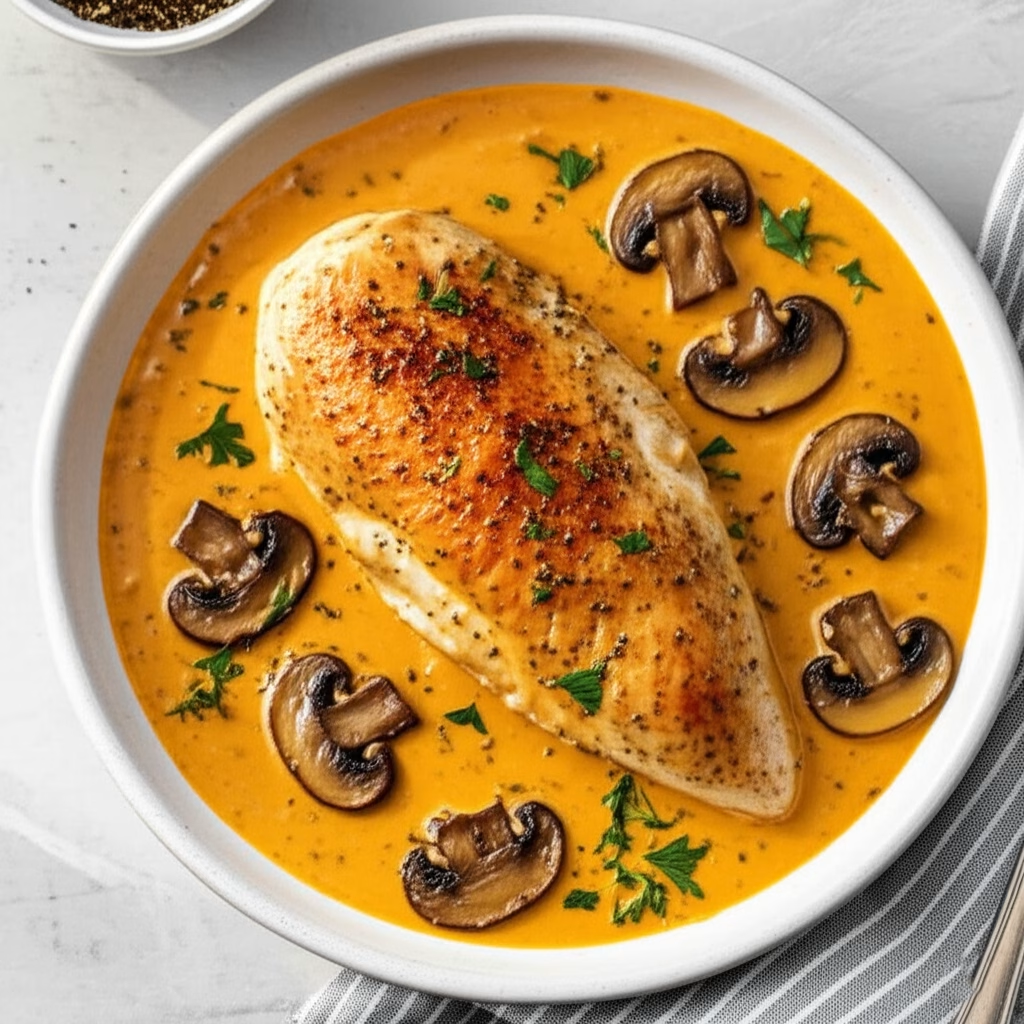Sous vide chicken breast with truffle oil is a gourmet yet surprisingly easy dish that combines the precision cooking technique of sous vide; resulting in juicy, tender, and perfectly cooked chicken; with the luxurious aroma and flavor of truffle oil. This elegant meal is perfect for special occasions or elevating a simple dinner with a rich, earthy twist.
Table of Contents
Ingredients
- 2 boneless, skinless chicken breasts (about 6-8 oz each)
- 2 teaspoons olive oil or unsalted butter
- 1-2 teaspoons white or black truffle oil (adjust to taste)
- Salt, to taste
- Freshly ground black pepper, to taste
- 2 garlic cloves, crushed
- 2 sprigs fresh thyme or rosemary
- Optional: lemon zest (for garnish)
Serves
2 servings
Step-by-Step Instructions
Step 1: Prepare the Chicken
- Pat the chicken breasts dry with paper towels.
- Season both sides generously with salt and freshly ground black pepper.
Step 2: Vacuum Seal or Use a Ziploc Bag
- Place each chicken breast in a vacuum-seal bag or a heavy-duty freezer Ziploc bag.
- Add a crushed garlic clove and a sprig of thyme or rosemary to each bag.
- Add a teaspoon of olive oil or butter to each bag for added richness.
- Vacuum seal the bags, or if using Ziploc, use the water displacement method to remove air: slowly lower the bag with chicken into water, sealing the top just before it’s fully submerged.
Step 3: Preheat Sous Vide Water Bath
- Set your sous vide precision cooker to 145°F (63°C) for tender, juicy chicken with a slightly firm texture.
- Alternatively, use 150°F (65.5°C) for slightly firmer chicken.
- Allow the water bath to preheat fully.
Step 4: Cook the Chicken
- Submerge the sealed bags into the water bath ensuring they are fully underwater and not touching each other.
- Cook for 1.5 to 2 hours. The chicken will be perfectly cooked and safe to eat after this time frame.
Step 5: Remove and Pat Dry
- Take the bags out of the water bath.
- Remove chicken breasts from the bags and discard herbs and garlic.
- Pat chicken dry thoroughly with paper towels to prepare for searing.
Step 6: Sear the Chicken
- Heat a skillet over medium-high heat and add 1 teaspoon olive oil or butter.
- Sear the chicken breasts for 30-45 seconds on each side until golden brown. This step adds flavor and texture without overcooking the meat.
Step 7: Drizzle with Truffle Oil
- Remove chicken from the skillet and transfer to serving plates.
- Lightly drizzle the truffle oil over each chicken breast for an aromatic finish.
- Optionally, garnish with lemon zest or freshly chopped herbs.
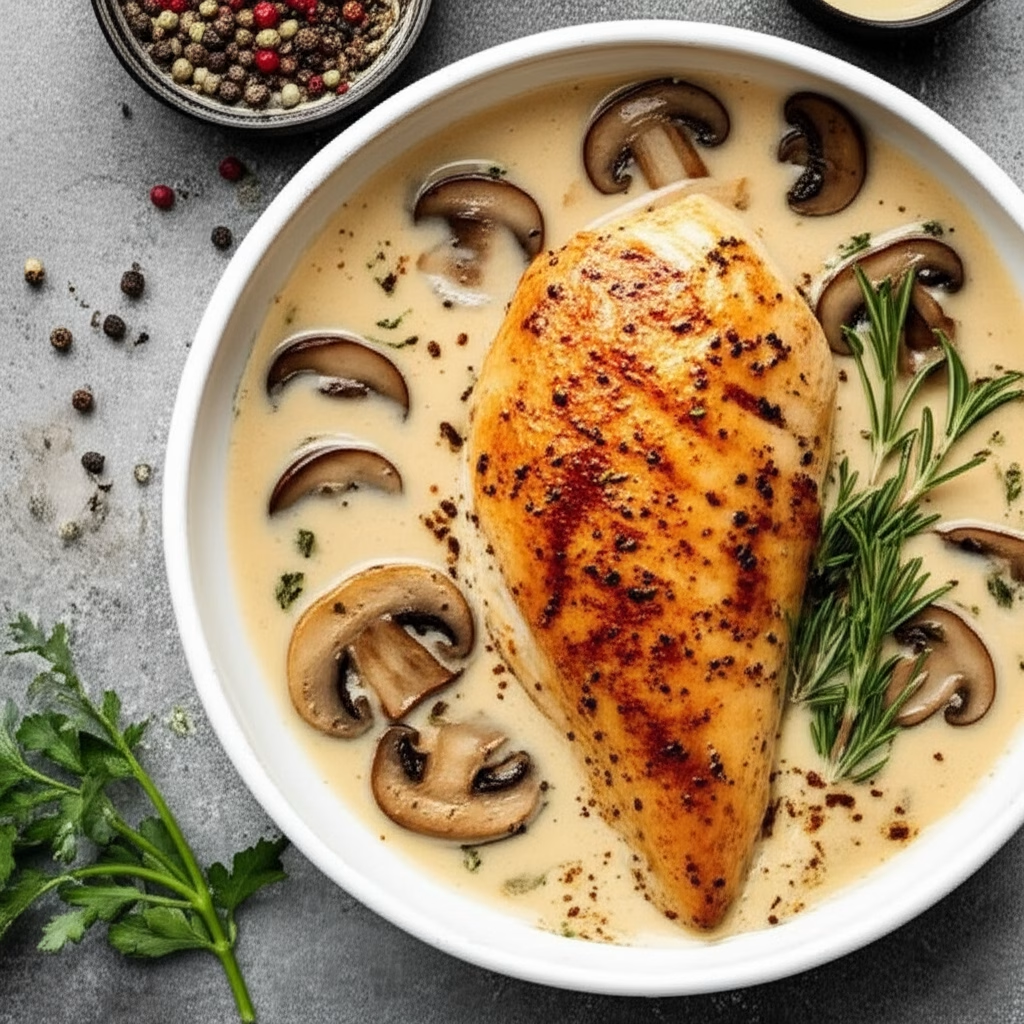
Serving Suggestions
- Serve alongside garlic mashed potatoes or creamy polenta.
- Pair with roasted asparagus, sautéed mushrooms, or steamed green beans.
- A fresh mixed greens salad with a lemon vinaigrette complements the richness.
- Drizzle some extra truffle oil or serve with a truffle cream sauce for added luxury.
- Serve with a glass of crisp white wine like Chardonnay or Sauvignon Blanc.
Tips for Perfect Sous Vide Chicken Breast with Truffle Oil
- Use fresh, high-quality chicken: For the best flavor and texture.
- Do not overcook: Follow time and temperature strictly to avoid dry chicken.
- Pat dry before searing: Prevents steaming and helps achieve a crispy crust.
- Use a hot pan for searing: Quick, high heat searing is key.
- Add herbs and garlic in the bag: Enhances subtle flavor infusion.
- Use truffle oil sparingly: It’s potent; too much can overpower the dish.
- Rest briefly after searing: Lets the juices redistribute.
- Experiment with truffle oil types: White truffle oil is milder, black is more intense.
- Seal bags tightly: Prevent water from leaking in and avoid air pockets.
- Serve immediately: Truffle aroma is strongest fresh.
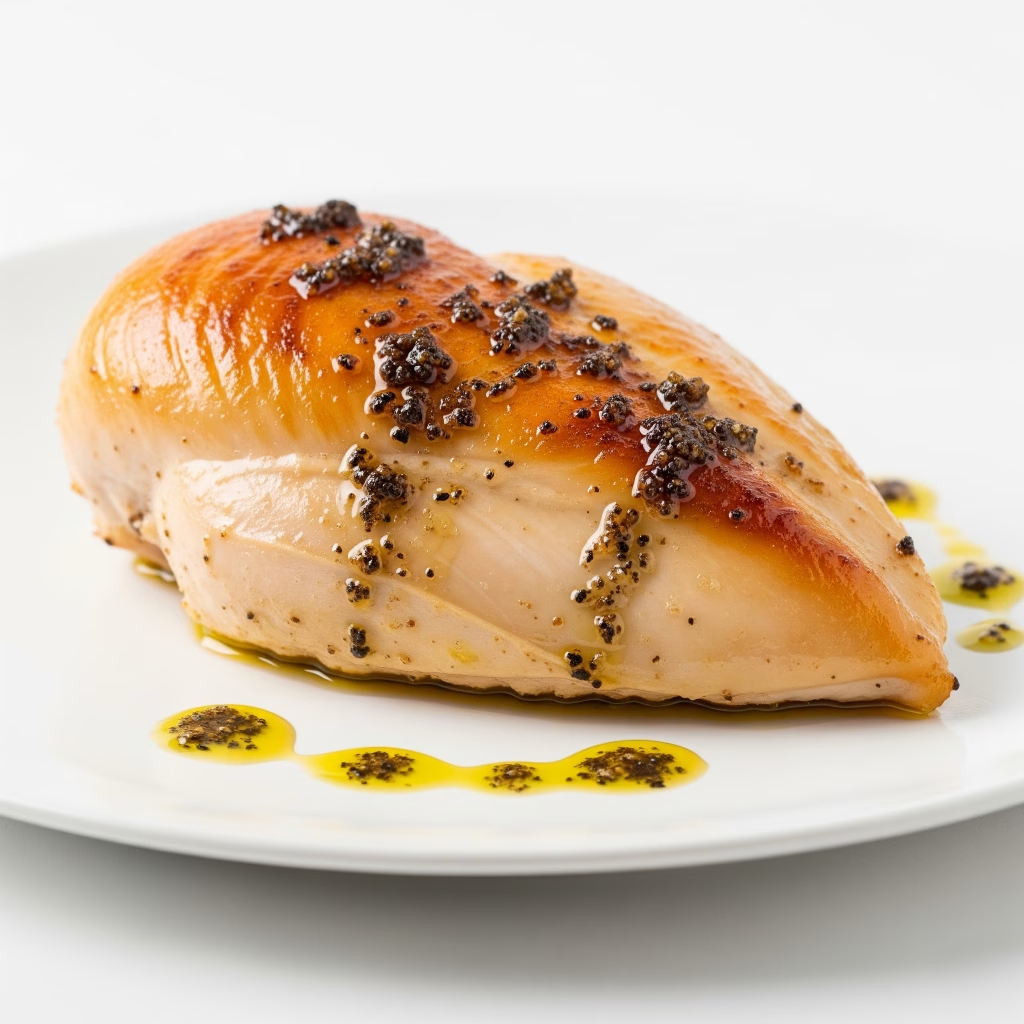
Healthier Alternatives
- Use extra virgin olive oil instead of butter to reduce saturated fat.
- Use low-sodium seasoning or herbs to control salt intake.
- Pair with steamed or roasted vegetables instead of heavy starches.
- Serve with cauliflower mash instead of potatoes for lower carbs.
- Use organic or free-range chicken breasts for leaner, higher-quality meat.
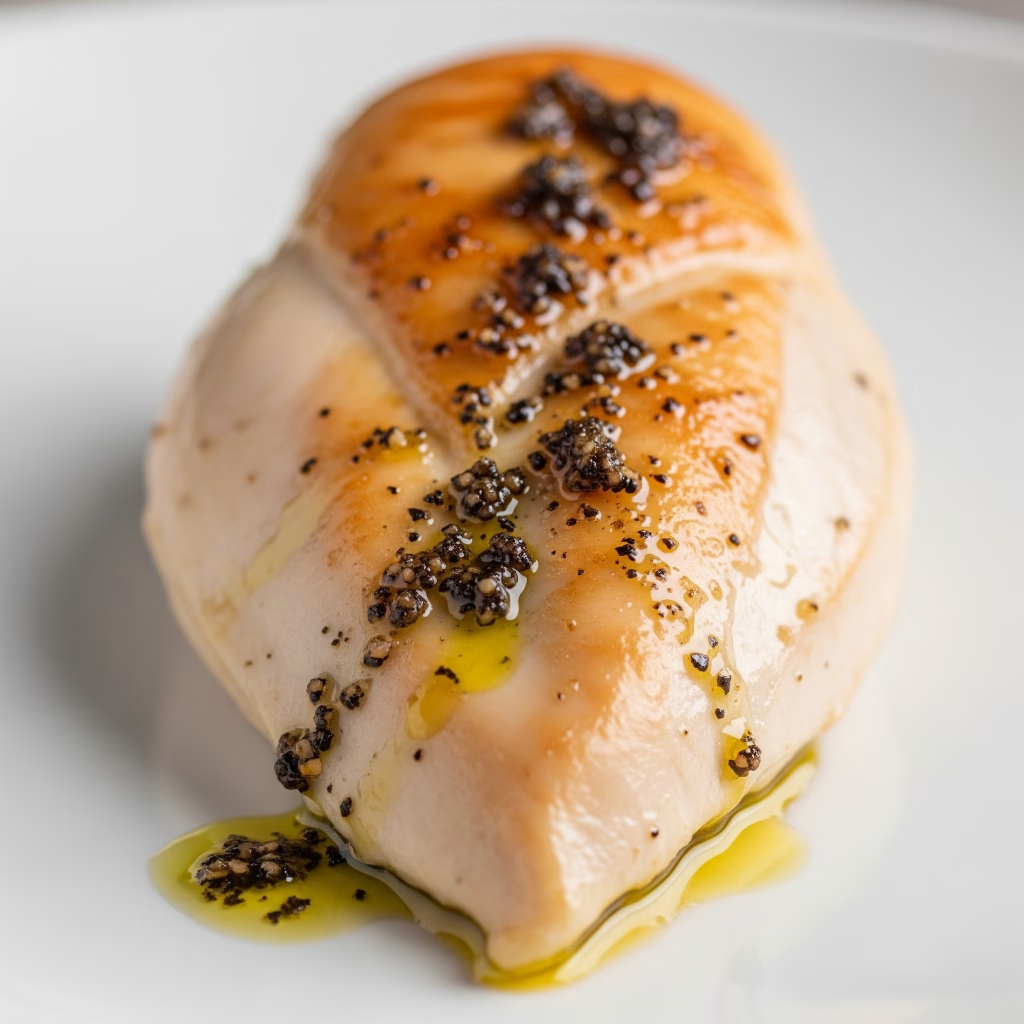
Creative Variations
- Truffle mushroom sauce: Serve with a creamy mushroom and truffle sauce for decadence.
- Stuffed chicken: Before sealing, stuff chicken breasts with spinach and goat cheese.
- Herb-infused oil: Add sage or tarragon along with thyme for unique flavors.
- Citrus twist: Add lemon slices inside the bag for a bright aroma.
- Spicy truffle: Mix truffle oil with chili flakes for a subtle heat.
- Asian fusion: Add ginger and scallions in the bag and drizzle with truffle-soy glaze.
- Garlic truffle mashed potatoes: Serve alongside for a rich side.
- Truffle risotto: Pair with creamy risotto finished with truffle oil.
- Truffle aioli: Serve chicken with a homemade truffle aioli dipping sauce.
- Grilled vegetables: Serve with truffle oil drizzled grilled zucchini and bell peppers.
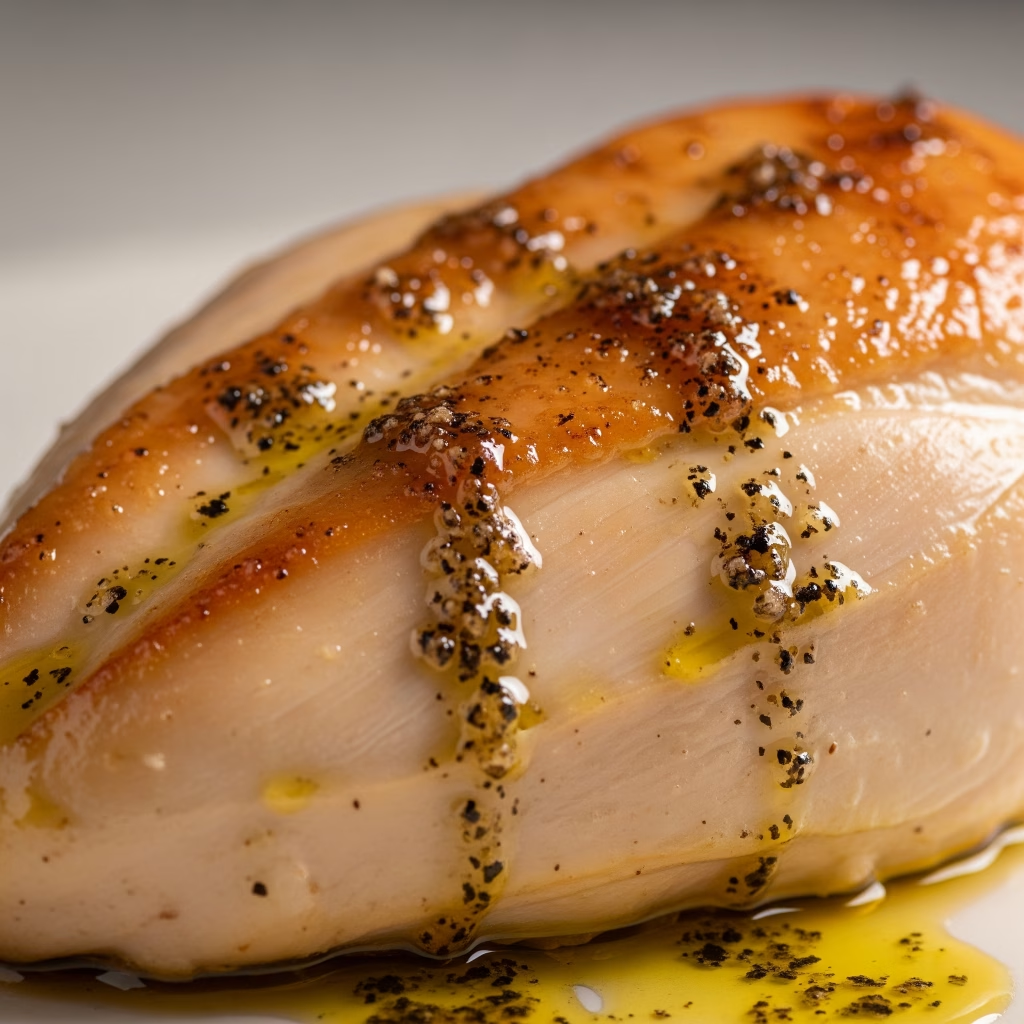
Common Mistakes to Avoid
- Skipping the pat dry step: Leads to steaming, not searing.
- Overusing truffle oil: Can overpower the delicate chicken flavor.
- Cooking at too high temperature: Results in dry, tough chicken.
- Not vacuum sealing properly: Water leakage can ruin texture and flavor.
- Searing for too long: Can overcook or burn the chicken.
- Using pre-seasoned or marinated chicken: May conflict with subtle truffle aroma.
- Not letting chicken rest after searing: Juices can run out.
- Ignoring sous vide timing: Too short or too long affects texture.
- Not seasoning enough: Balanced seasoning brings out best flavor.
- Not experimenting: The beauty of sous vide is precision — trust the process.
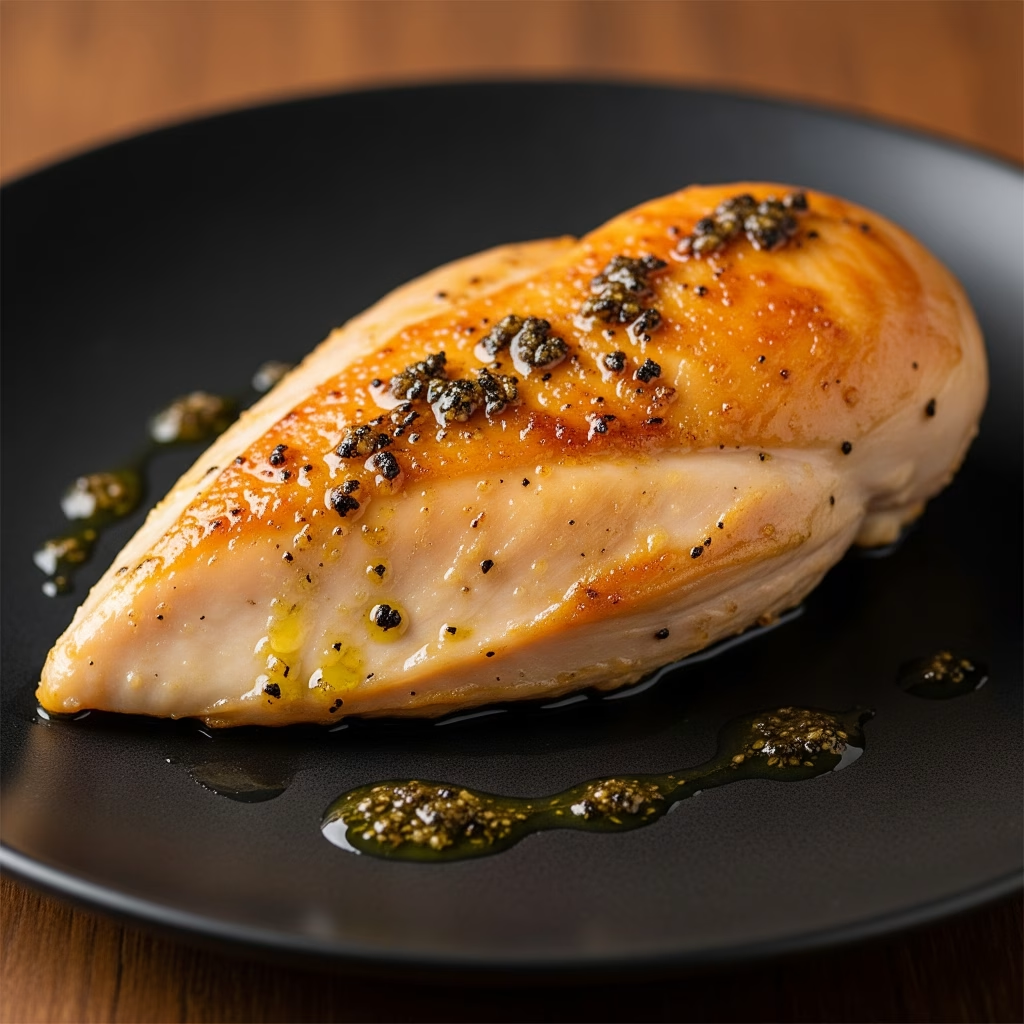
History of Sous Vide Chicken and Truffle Oil
The sous vide cooking technique, French for “under vacuum,” was developed in the 1970s as a method to cook food at precise low temperatures in vacuum-sealed bags submerged in water. It revolutionized professional kitchens by delivering perfect doneness and enhanced texture, particularly for lean proteins like chicken breast, which traditionally risks drying out with conventional cooking.
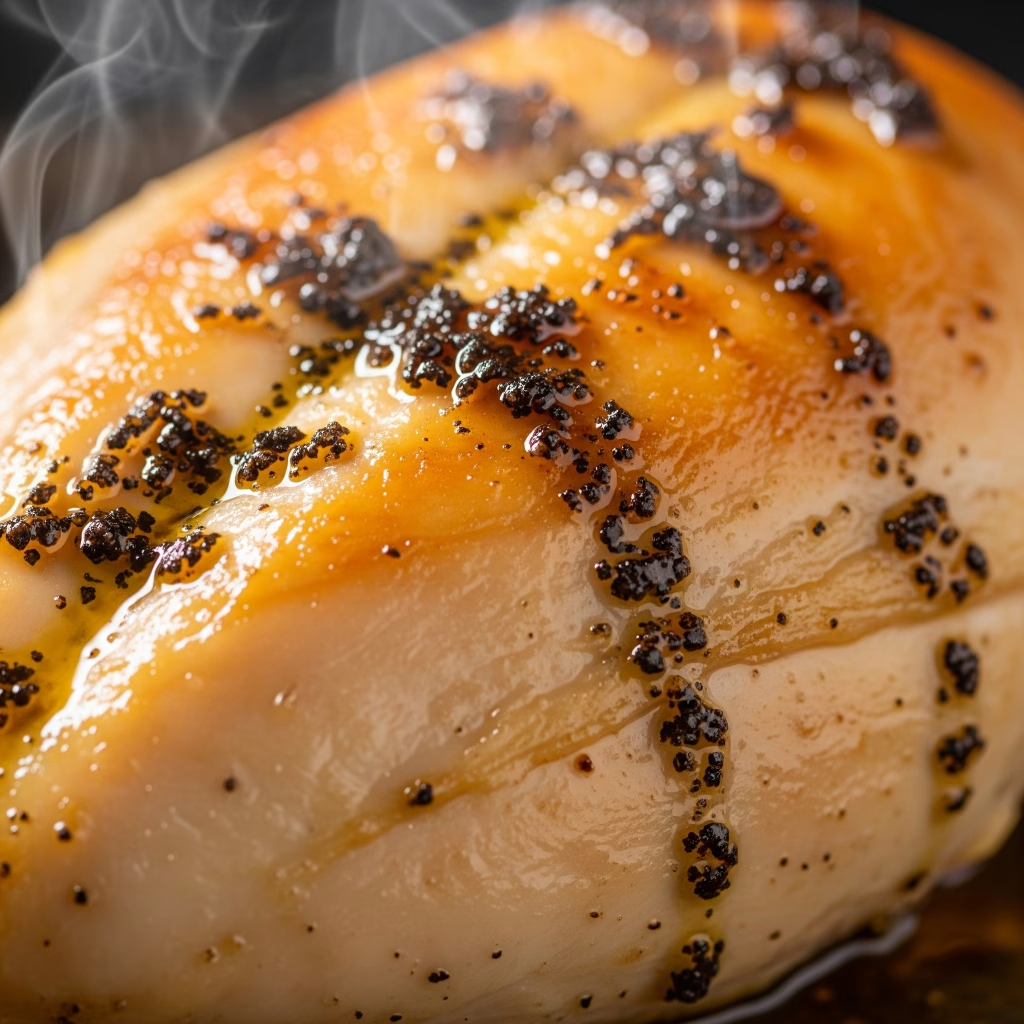
Chicken breast sous vide is now a popular method globally, prized for its juicy, tender results. Unlike pan-frying or roasting, sous vide prevents overcooking and ensures consistent results every time.
Truffle oil, meanwhile, is a modern culinary invention inspired by the prized truffle fungi, known for their deep, earthy aroma and flavor. Real truffles are rare and expensive, so truffle oils; infused with truffle essence; emerged as an accessible way to add luxurious truffle notes to dishes. Combining sous vide chicken breast with truffle oil creates a harmony of modern technique and gourmet indulgence, beloved in contemporary fine dining.
FAQs about Sous Vide Chicken Breast with Truffle Oil
- What temperature should I cook chicken sous vide?
Typically between 140°F (60°C) and 150°F (65.5°C), depending on desired texture. - How long does sous vide chicken breast take?
Generally 1.5 to 2 hours. - Can I sous vide frozen chicken breasts?
Yes, just increase cooking time by about 30 minutes. - Is truffle oil healthy?
It’s used in small amounts; high-quality truffle oil is safe but should be consumed moderately. - Can I use truffle oil in cooking or only as a finishing oil?
Best used as a finishing oil to preserve aroma and flavor. - How should I store leftover sous vide chicken?
Refrigerate in airtight containers for up to 3 days. - Can I sous vide other cuts of chicken?
Yes, thighs and legs can also be sous vide but require different temperatures and times. - Does sous vide cooking kill bacteria?
Yes, cooking at proper temperatures for adequate time ensures food safety. - What if I don’t have a vacuum sealer?
Use heavy-duty Ziploc bags with the water displacement method. - Can I add other herbs or spices to the bag?
Absolutely! Customize flavors with rosemary, sage, lemon zest, or peppercorns.
Sous vide chicken breast with truffle oil offers an elegant, foolproof way to enjoy perfectly cooked chicken enhanced by the unmistakable aroma of truffles. This method locks in juices and tenderness, creating a restaurant-quality dish in your own kitchen.
Whether you’re hosting guests or simply indulging yourself, this recipe balances modern cooking science with gourmet flavor, making it a timeless classic for refined palates. With a few simple steps, you can elevate an everyday protein to an extraordinary culinary experience.


